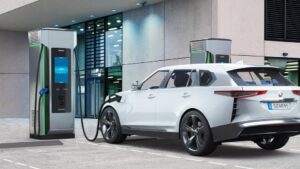
Berkeley Lab engineers have developed an all-season smart roof coating that keeps homes warm during the winter and cool during the summer without consuming natural gas or electricity. The all-season roof coating automatically switches from keeping you cool to warm, depending on outdoor air temperature.
The problem with many cool-roof systems currently on the market is that they continue to radiate heat in the winter, which drives up heating costs, explained Junqiao Wu, a faculty scientist who led the study. “Our new material – called a temperature-adaptive radiative coating (TARC) – can enable energy savings by automatically turning off the radiative cooling in the winter, overcoming the problem of overcooling,” he said.
The key to the technology is a strange compound called vanadium dioxide (VO2). In 2017, Wu and his research team discovered that electrons in vanadium dioxide behave like metal to electricity but an insulator to heat. Below about 67 degrees Celsius, vanadium dioxide is also transparent to thermal-infrared light. But once vanadium dioxide reaches 67 degrees Celsius, the material switches to a metal state, becoming absorptive of thermal-infrared light. This ability to switch from one phase to another – in this case, from an insulator to metal – is characteristic of what’s known as a phase-change material.
Wu and his team engineered a 2-centimeter-by-2-centimeter TARC thin-film device to see how vanadium dioxide would perform in a roof system. A wireless measurement device set up on Wu’s balcony continuously recorded responses to changes in direct sunlight and outdoor temperature from a TARC sample, a commercial dark roof sample, and a commercial white roof sample over multiple days.
According to researchers’ measurements, TARC reflects around 75% of sunlight year-round, but its thermal emittance is high (about 90%) when the ambient temperature is warm (above 25 degrees Celsius), promising heat loss to the sky. Researchers said that TARC’s thermal emittance automatically switches to low in cooler weather, helping to retain heat from solar absorption and indoor heating.
The researchers found that the new smart roof coating outperforms existing roof coating for energy saving in 12 of the 15 climate zones, particularly in regions with wide temperature variations between day and night or between winter and summer. With TARC installed, the average household in the U.S. could save up to 10% electricity.
Researchers plan to develop TARC prototypes on a larger scale to further test its performance as a practical roof coating. They say TARC may also have the potential as a thermally protective coating to prolong battery life in smartphones and laptops and shield satellites and cars from extremely high or low temperatures. It could also be adapted as a temperature-regulating fabric for tents, greenhouse coverings, and even hats and jackets.



